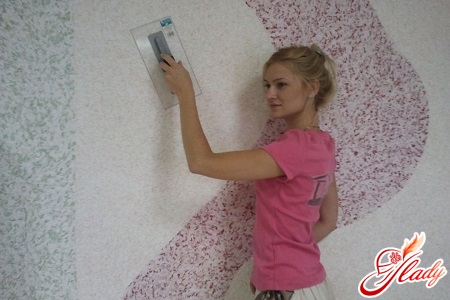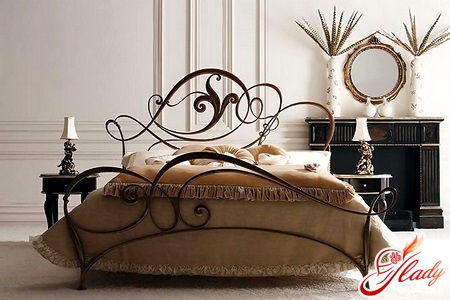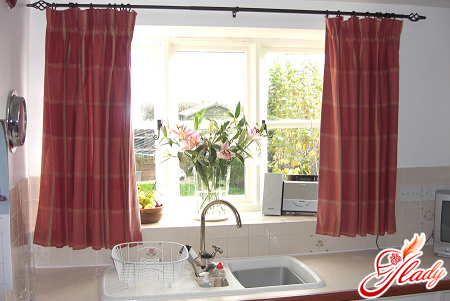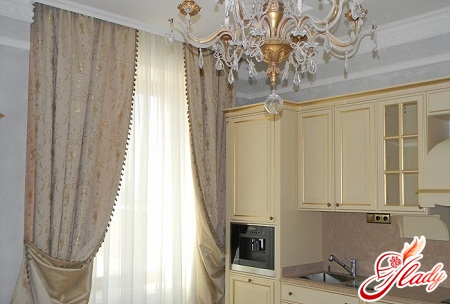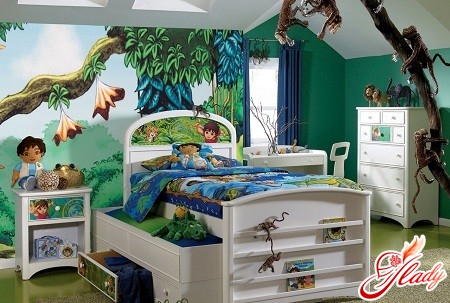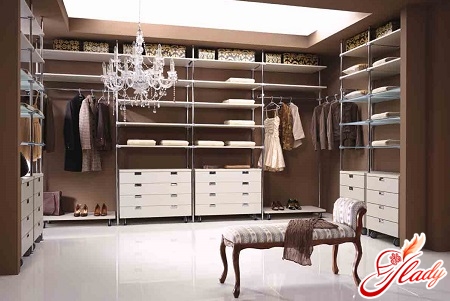 What does a woman need to be completely happy?No representative of the fair half will give you a clear answer to this question. But if you ask a woman whether the presence of a full-fledged dressing room will add joy to her life, the answer will most likely be positive. So what's the matter? Even if your home layout does not provide for such a (simply vital!) room, then take into account the fact that exists. A do-it-yourself dressing room, carefully integrated into standard (and even small-sized!) apartments, has already managed to make many women happy. So, by and large, nothing prevents you from equipping such a dressing room at home. Just imagine: shelves, drawers, hangers, boxes ... And everything in its place, and even a mirror! Large and convenient! Can you imagine it? Great? And who would doubt it? Therefore, let's consider the possibilities of organizing such "happiness" and the rules for its implementation.
What does a woman need to be completely happy?No representative of the fair half will give you a clear answer to this question. But if you ask a woman whether the presence of a full-fledged dressing room will add joy to her life, the answer will most likely be positive. So what's the matter? Even if your home layout does not provide for such a (simply vital!) room, then take into account the fact that exists. A do-it-yourself dressing room, carefully integrated into standard (and even small-sized!) apartments, has already managed to make many women happy. So, by and large, nothing prevents you from equipping such a dressing room at home. Just imagine: shelves, drawers, hangers, boxes ... And everything in its place, and even a mirror! Large and convenient! Can you imagine it? Great? And who would doubt it? Therefore, let's consider the possibilities of organizing such "happiness" and the rules for its implementation.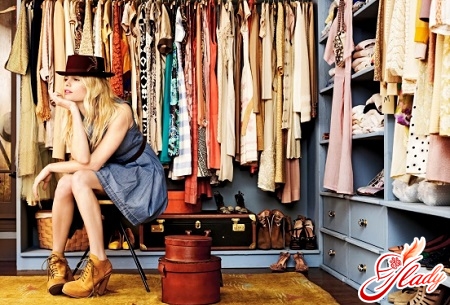
Possibilities for organizing a wardrobe
How to make a dressing room with your own hands? In fact, there are not so many of these possibilities. However, there is some choice.
Are there such possibilities? Great!So, your wardrobe is almost ready (at least in the design)! And then you will have to decide how exactly you are going to equip it. Firstly, you can use a factory system of metal boxes, guides and hangers. Secondly, invite a craftsman (or force your "home craftsman"), who will make shelves, boxes, niches and other necessary accessories for you. They are most often made of wood or plasterboard.
Rules for organizing a dressing room
Considering the simple and few rulesorganization, you will be able to make sure that the dressing room, made with your own hands, will not only fit well into the interior, but will optimize the living space. And these rules are as follows.
- The dressing room must have a depth of at least one meter and a width of one and a half meters. This is a minimal space, which will be enough to accommodate shelves and boxes.
- In the dressing room, made according to the rules, there must necessarily be a place for changing clothes (after all it is a room, not a wardrobe) and a large mirror. But this condition is not mandatory, but rather - desirable.
- The dressing room must necessarily be ventilated, otherwise the room will soon have a musty smell (the smell of the trunk), which will also pass to things.
- The dressing room should only be designed forstorage of clothes, shoes, care products, as well as various accessories: bags, jewelry, belts, etc. If you adapt this room for storage and other things, it will cease to be a dressing room and become a closet.
Here is a minimal set of rules, taking into account whichyou can proceed directly to planning the dressing room, regardless of where exactly you are going to make it: in the pantry, in the hallway or in the bedroom. Be sure to first draw up a competent plan-drawing taking into account all the dimensions. In any case, it is better to correct possible flaws and inaccuracies in the layout on paper.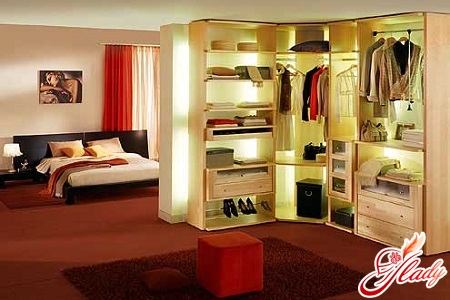
The layout of the dressing room
First, draw a plan of your future wardrobeall doors, windows, heating batteries, possible protrusions and recesses in the walls - this will help you to optimally plan the placement of shelves, racks and drawers. Then proceed to zoning the interior space. How you place your entire wardrobe in it, of course, depends, first of all, on your own ideas about convenience. Nevertheless, there are standard norms for planning individual zones of the dressing room, which remain relevant even for a dressing room converted from a pantry. The zone for outerwear and long clothing should be planned so that these clothes are placed in it freely. Therefore, this zone should have a depth of about fifty centimeters and a height of at least one and a half meters. What will be the length of this zone depends only on the amount of your clothes. The zone for placing short clothes: shirts, blouses, jackets and skirts should also have a half-meter depth (width) and a height of about one meter. Such a small height of this zone leaves you with free space both below and above. And it, in turn, can be adapted for the third and fourth zones. The third zone (according to the standard layout) is the shoe storage zone. It can be equipped with a special rack with shoe shelves, or used as a place to store shoe boxes. So the height for this zone is limited only by the ceiling, and the required depth should not be less than thirty centimeters. In the fourth zone of the dressing room (usually its upper part) it is supposed to store hats and accessories. You can also place clothing and shoe care products there. Thus, the entire interior space of the dressing room is divided into three main zones:
- The upper, which is at a height of two or two and a half meters from the floor;
- The middle one, which is located about sixty centimeters to one and a half meters from the floor;
- The lower one, which should not occupy space above seventy centimeters from the floor.
When planning your wardrobe, don't forget to alsomirror (or even mirrors), lighting, finishing materials, shape and color of shelves, cabinets, baskets and boxes. Keep in mind that even a small dressing room made with your own hands is a great opportunity to optimally organize your living space and show off your design talents. And these are not its only possibilities.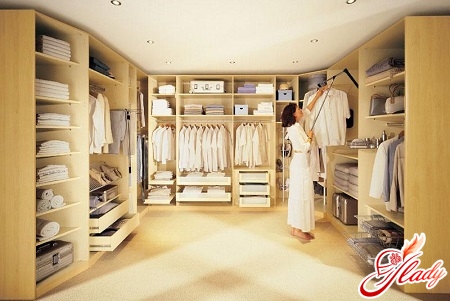
Features and benefits of the dressing room
In addition to the advantages mentioned, it is also worth notingthat a special place for storing things will save you from unnecessary furniture: cabinets, chests of drawers, hangers. And, therefore, your house will become freer, more spacious and brighter, despite the fact that you will “steal” square meters from its useful area. In addition, a dressing room will definitely extend the life of all your clothes. After all, now each thing will be in its place and it will be difficult for it to “fall over” somewhere. And the relatively free placement of things will protect them from friction, unnecessary contact with other clothes and shifting from place to place. In addition to clothes, you can also store bed linen, suitcases and bags, an iron and a vacuum cleaner, a sewing machine, and needlework supplies in the dressing room. In addition, if this room is spacious enough, you can install a toilet stand or a floor hanger here. Agree that in this way it is possible to correct (or at least adjust) the mistakes of architects, who do not always successfully plan the apartments and houses in which we have to live. This is exactly the case when in our hands, if not everything, then a lot. And a do-it-yourself dressing room is an excellent opportunity to see this in practice. We recommend reading:




